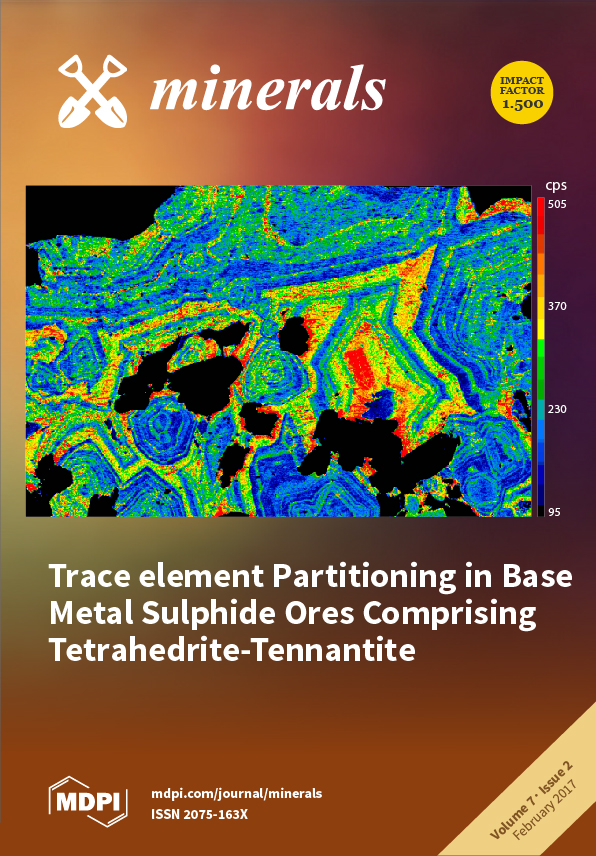Metallic elements of higher economic value, occurring in the mineralogy of Zimapán, are Pb, Zn, Cu, and Fe; said elements are sold as concentrates, which, even after processing, generally include significant concentrations of Mo, Cd, Sb, Ag, and As that can be recovered
[...] Read more.
Metallic elements of higher economic value, occurring in the mineralogy of Zimapán, are Pb, Zn, Cu, and Fe; said elements are sold as concentrates, which, even after processing, generally include significant concentrations of Mo, Cd, Sb, Ag, and As that can be recovered through different leaching methods. In this work, the influence of temperature in the complexation of silver contained in a concentrate of Zn using the technology of thiosulfate with oxygen injection was studied. Chemical and mineralogical characterization of the mineral concentrate from the state of Hidalgo, Mexico confirmed the existence of silver contained in a sulfide of silver arsenic (AgAsS
2) by X-ray Diffraction (XRD). The results obtained by Atomic Absorption Spectrophotometry (AAS) reported abundant metallic contents (% w/w) (48% Zn, 10.63% Fe, 1.97% Cu, 0.84% Pb, 0.78% As, and 0.25% Ag). These results corroborate the presence of metallic sulfides such as pyrite, chalcopyrite, and wurtzite; this last species was identified as the matrix of the concentrate by X-ray Diffraction (XRD) and Scanning Electron Microscopy-Energy-Dispersive X-ray Spectroscopy (SEM-EDS). Pourbaix diagrams were constructed for the AgAsS
2–S
2O
32−–O
2 system at different temperatures, which allowed the chemical reaction of leaching to be established, in addition to determining Eh-pH conditions in which to obtain silver in solution. The highest recoveries of the precious metal (97% Ag) were obtained at a temperature of 333 K and [S
2O
32−] = 0.5 M. The formation of silver dithiosulfate complex (Ag(S
2O
3)
23−) was confirmed by the characterization of the leach liquors obtained from the experiments performed in the temperature range of 298 to 333 K using Fourier transform infrared spectroscopy (FTIR).
Full article





